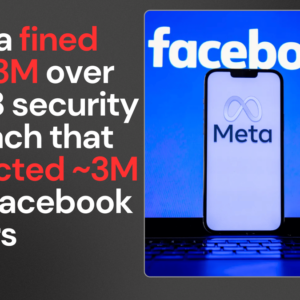Phishing scams are like sneaky wolves in sheep’s clothing, trying to trick you into giving away your personal information. In this blog post, we will explore what phishing is, the different types of phishing scams, how they work, and most importantly, how you can protect yourself from them. So, let’s dive in!
What Is Phishing?
Phishing is a type of online scam where bad guys pretend to be someone you trust to steal your personal information. This could include things like your passwords, credit card numbers, or even your social security number. They often do this by sending fake emails or messages that look real.
Types of Phishing Scams
There are several types of phishing scams that you should know about:
- Email Phishing: This is the most common type. Scammers send emails that look like they are from a legitimate company but are actually fake.
- Spear Phishing: Unlike regular phishing, spear phishing targets specific individuals or organizations. The scammer gathers information about the target to make their message more convincing.
- Smishing: This type of phishing happens through text messages (SMS). The scammer sends a text that includes a link to a fake website.
- Vishing: This stands for voice phishing. Scammers call you pretending to be from a trusted organization and try to get your personal information over the phone.
How Phishing Attacks Work
Phishing attacks often start with an email or message that looks real. When you click on a link or download an attachment, you might be taken to a fake website designed to steal your information or install harmful software on your device.
Why They Are Effective (Social Engineering Explained)
Phishing works because scammers use a technique called social engineering. This means they manipulate people into giving away their information by creating a sense of urgency or fear. For example, they might say there’s a problem with your bank account and you need to act fast. When people feel scared or rushed, they are more likely to make mistakes.
Real-Life Example: The Google and Facebook Scam (2013-2015)
One of the biggest phishing scams happened between 2013 and 2015 and involved two giant companies: Google and Facebook. A man named Evaldas Rimasauskas tricked these companies into sending him over $100 million!
How It Happened and What Went Wrong
Rimasauskas pretended to be a computer hardware company called Quanta Computer. He sent fake emails with forged invoices that looked real. Because both Google and Facebook regularly did business with Quanta, they didn’t think twice before paying him. Rimasauskas was very clever, he even created fake contracts and used forged signatures from company executives! Eventually, he was caught and arrested, but not before he had stolen a lot of money.
How to Recognize a Phishing Attempt
Knowing how to spot phishing attempts can keep you safe! Here are some common signs:

Common Signs to Watch Out For
- Strange Email Addresses: Check if the sender’s email address looks odd or has extra characters.
- Urgent Language: If the message says you need to act fast or there’s an emergency, be cautious!
- Poor Spelling and Grammar: Many phishing emails have mistakes that make them look unprofessional.
- Links That Don’t Match: Hover over any links before clicking them. If the URL looks different from what it should be, don’t click!
Tips to Protect Yourself from Phishing Scams
Staying safe online is super important! Here are some tips:
Actions to Take if You Suspect a Phishing Email
- Don’t Click Links: If you think an email is suspicious, don’t click any links or download attachments.
- Verify the Sender: If it’s from a company you know, call them using their official number (not the one in the email) to check if the email is real.
- Report It: Forward suspicious emails to your email provider so they can take action.
Simple Steps to Stay Safe
- Always use strong passwords and change them regularly.
- Enable two-factor authentication on your accounts for extra security.
- Keep your computer’s antivirus software up-to-date.
Final Thoughts: Share This Knowledge to Stay Safe
Phishing scams can happen to anyone, but by being aware and knowing how to spot them, you can protect yourself! Remember, if something seems too good to be true or feels off, trust your instincts!
Stay safe online and share these tips with your friends! The more we know about phishing scams, the better we can fight against them together!












